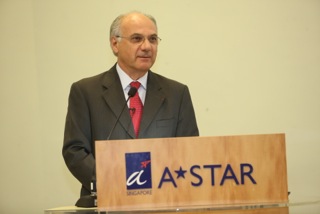How would you define innovation?
There is a lot of misunderstanding about innovation.
First, people tend to confuse invention and innovation. According to international standards, an innovation is the process of translating an existing invention into an application (process, product or service) with the ultimate objective of commercialization. The microprocessor and the transistor are examples of inventions. But medical devices, portable radio sets, flat screen televisions or tracking systems etc., using microprocessors and transistors, are innovations. Although it might sound surprising, an innovation is generally nothing new. It is simply the smart application of an invention.
Innovation also isn’t a guarantee of success. Not all innovations lead to new products, services or processes. Commercialization is a step forward and occurs when an innovation answers market needs or find the right “product-market fit”.
An example of disruptive innovation in the healthcare sector?
Connected devices, enabling onsite detection of Infectious Diseases are an example of disruptive innovation. Using a smartphone, one is able today to diagnose some infectious diseases in remote locations in Middle East, Africa or South America, and even in conflict areas with very limited healthcare infrastructures. This is a perfect illustration of disruptive innovation. People behind these technologies did not invent smartphones, chips or biosensors but came up with useful diagnostic applications, adopting a multidisciplinary approach.
Why is innovation essential to Healthcare?
New healthcare solutions are essential to improving the lives of patients across the globe. To solve new problems, the healthcare sector needs both inventions, by continuously pushing boundaries and achieving technological breakthroughs, and innovations, which are often the product of creative multidisciplinary partnerships.
The example of 3D endoscopes speaks for itself. Miniaturisation of devices, thinner fibers, stereoscopic cameras, enhanced image processing algorithms provide much sharper information and have deeply improved the diagnosis of specific cardiac, gastrointestinal or gynecological conditions.
This technological breakthrough arose from a multidisciplinary teamwork, including surgeons, internal medicine physicians, gynecologists, endocrinologists, 3D imaging specialists and medical physicists.
Patrick J. Cozzone is the Executive Director of the Singapore Bioimaging Consortium of A*STAR. He is Professor Emeritus of Biophysics at the Faculty of Medicine of Aix-Marseille University and a honorary member of the Academic Institute of France where he held the chair of Biophysics from 1998 to 2008. He holds a PhD in Organic Chemistry (Marseille), a “Doctorat ès-Sciences” in Biochemistry (Marseille) and a MBA (University of Chicago). He has previously held research/faculty positions at Stanford University (Pharmacology Department of the School of Medicine and Stanford Magnetic Resonance Laboratory), the Universities of Tunis and Sfax and the Pasteur Institute in Tunis (Tunisia) and the Institute of Biological Chemistry in Marseille. He is the founding-director (1986) of the Centre de Résonance Magnétique Biologique et Médicale (CRMBM) that he headed until 2013. CRMBM specializes in preclinical and clinical studies of heart, muscle and brain using all modalities of magnetic resonance spectroscopy and imaging. CRMBM is jointly operated in Marseille by CNRS, Aix-Marseille University and the University Hospital, with a strong interface with industrial partners. P.J. Cozzone has advised investment funds, entrepreneurs and SMEs in the biotech and medtech industry, both in Europe and North America. As a member of the supervisory board of Trophos SA in Marseille, he was instrumental in the strategic development of this neurobiotech company acquired in 2015 by Roche. P.J. Cozzone has co-authored over 400 peer-reviewed papers and directed 40 PhD theses. He has served in the leadership of several French research agencies (CNRS, INRA, ANR, etc.), national charities and international organizations, has chaired the “Bioengineering, Bioimaging, Drugs and Therapeutics” research council of CNRS, was an adviser to the French Minister of Research, has presided ESMRMB (European Society for Magnetic Resonance in Medicine and Biology), and is currently a member of the IUPAB Executive Committee and the Editor-in-chief of MAGMA. He is a Laureate of the French Academy of Sciences (1981), the recipient of the 1998 European Magnetic Resonance Award in Basic Sciences, a fellow of ISMRM (2007) and a member of the Academy of Sciences, Literature and Arts, Marseille (2011). He was knighted in the French national order of the Legion of Honor in 2012.


